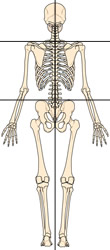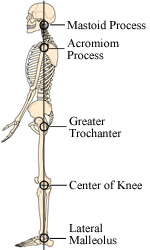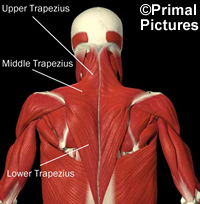
The information in this course is from the eLearning continuing education course:
Functional Training for All Ages by Sandy Stoub MS. See the full course to learn more information about the components and importance of functional training. Videos and interactive material are included in the course.
Fundamentals of Training
All persons share basic components of movement and structure regardless of age or function. These include:
- posture and mobility
- raising and lowering of the center of gravity
- the ability to push and pull
- the ability to change direction and create rotational force.
Let’s consider each of these individually.
Posture and Mobility
To maintain balance and posture, core strength must be maintained on all sides of the axial skeleton. Muscles on both sides of a joint maintain an intrinsic and cooperative relationship called agonist/antagonistic actions. When imbalances between muscles in a pair occur, misalignments are common. This can be particularly damaging to weight-bearing joints.


Figure one: Postural alignment.
Minimally, reduced flexibility is common, but functional deviations can lead to injury or diminished functional ability. Since balance involves maintaining alignment over the center of gravity, postural misalignments can lead to less stability and, in the case of older adults, loss of balance-increasing the risk of injury through falls. Balance is both static (stationary) and dynamic (in motion) and muscular balance during both situations is critical.
Raising and Lowering Center of Gravity
Individuals raise and lower their center of gravity in many simple functions of everyday living from sitting in chairs and cars, getting into a bathtub, bending to pick up items from the floor, lifting children, or gardening. This ability is critical in athletic performance as well: placing a ball on a golf tee, fielding a ground ball, or jumping for the net in volleyball to name just a few. Control during this raising and lowering is important and should be considered as elements of functional training.
Push and Pull
The ability to push and pull involves moving towards and away from one’s center of gravity. Again, these elements are utilized to open or close a door, move a grocery cart or stroller, strength training activity, and in many sports. These simple moves are actually complex as they involve multiple planes of action.
Change Direction and Create Rotational Force
Rotational movement is fundamental to even the simplest actions: backing a car, reaching for a file drawer, or moving an item from one location to another. In sport we swing a racquet-club-bat, throw a ball, “swing” our partner when we are dancing, or perform a floor routine in gymnastics. Our body is designed for this rotational movement through the prevalence of angular attachment of muscle, allowing for multi-plane movements however, training often occurs in single plane.
The pectoralis major is an example of a muscle with angular attachment.
(Primal Pictures© Primal Pictures homepage)

While isolated training has benefits during the introductory phase of training, life involves multiple planes of action due to the sequenced aspect of ongoing activity. A goal of a complete training program should involve adding complexity and simulation of movements needed for a particular sport or functional activity of daily life. This involves a thorough understanding of the abilities and limitations existing within an individual’s structure which can be uncovered through a head to toe analysis. This step by step process will allow a trainer to plan the most effective training program for an individual, or even a group.
The trapezius is an example of a muscle with angular attachment.
Primal Pictures© Primal Pictures homepage

Reference: Stoub, S. (2016) Functional Training for All Ages. Fitness Learning Systems.


